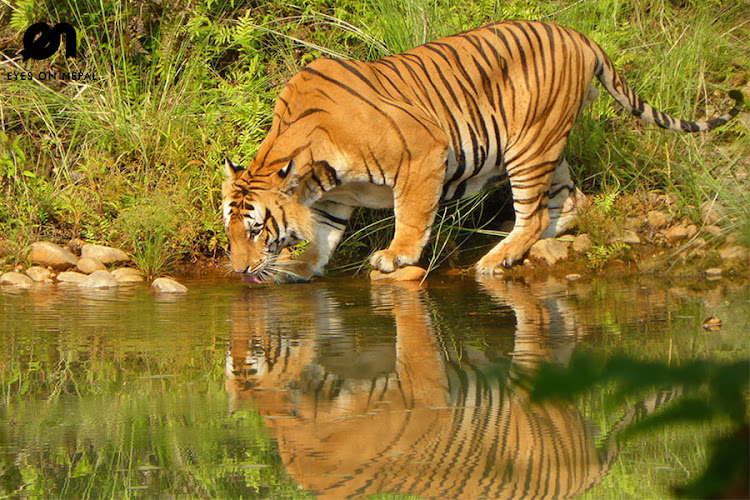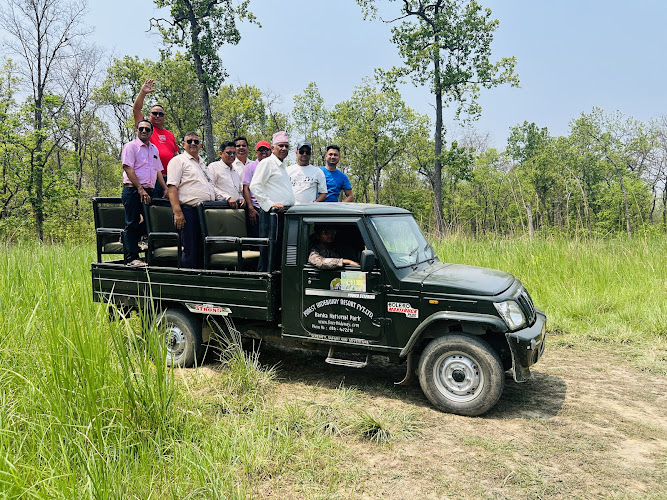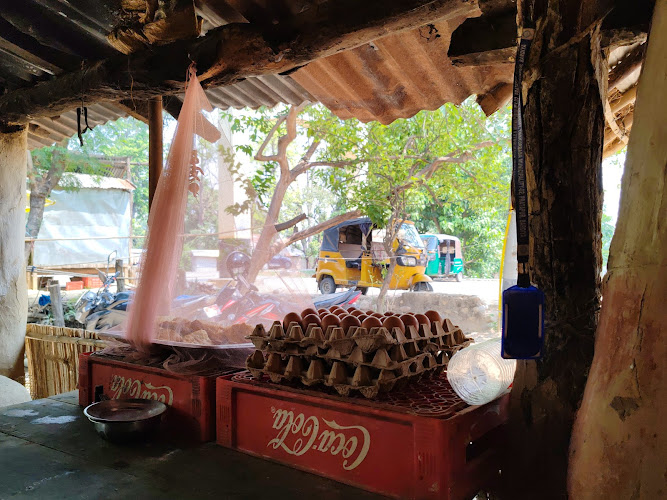



Bardiya National Park - Remote Wilderness & Untouched Safari Experience
NP
While tour buses clog the roads to Chitwan and elephant-back safari queues snake through Sauraha village, Nepal's largest undisturbed wilderness lies 450 kilometers west, where the Karnali River carves through 968 square kilometers of pristine sal forest and grasslands that few foreign visitors ever witness. Bardiya National Park offers everything Chitwan promises—prowling Bengal tigers, bathing rhinoceros, trumpet-calling elephants—but delivers it without the crowds, the commercialization, or the sense that you're experiencing nature on a conveyor belt. This is what Nepal's Terai looked like before tourism discovered it, and for those willing to venture beyond the well-worn circuit, Bardiya reveals jungle encounters that feel genuinely wild.
Established as a royal hunting reserve in 1969 and upgraded to national park status in 1988, Bardiya sprawls along the eastern bank of the Karnali River in the Mid-Western Terai, its boundaries encompassing the Babai Valley and extending south to the agricultural plains. The park's 968 square kilometers make it Nepal's largest protected Terai habitat, dwarfing even Chitwan's 952 square kilometers. But size tells only part of the story. While road construction has fragmented Chitwan's wilderness, Bardiya remains remarkably intact, its interior forests and grasslands stretching unbroken for kilometers, creating exactly the kind of undisturbed habitat that supports healthy predator populations.
The numbers substantiate Bardiya's emergence as a conservation powerhouse. The 2022 national tiger survey counted 125 tigers prowling these forests—Nepal's second-largest population, trailing only Chitwan's 128 by a mere three individuals. This represents extraordinary recovery from decades past when poaching devastated tiger populations across Nepal. One-horned rhinoceros, reintroduced beginning in 1986 through translocations from Chitwan, have multiplied from those initial 13 individuals to a breeding population exceeding 38 animals. Wild elephants, both resident herds and seasonal migrants from India, number around 50 individuals that move through the park following ancient migratory corridors.
But Bardiya's most remarkable residents swim rather than walk. The Karnali River harbors one of Nepal's few remaining populations of Gangetic dolphins, those peculiar freshwater cetaceans that navigate turbid waters using echolocation rather than eyesight. Spotting these endangered creatures breaking the surface for air represents one of Nepal's rarest wildlife encounters, possible from riverbank camps or during float trips through the park's aquatic corridor. The river system also supports gharial crocodiles with their distinctive elongated snouts, mugger crocodiles, and 125 recorded fish species that form the foundation of the aquatic food web.
The park's 642 faunal species include creatures rarely seen in Chitwan. Swamp deer, also called barasingha for their distinctive many-pointed antlers, graze in wetland meadows—Bardiya protects one of Nepal's few remaining populations. Blackbuck antelope bound across grasslands in herds, their spiral horns and striking black-and-white coloration making them unmistakable. Sloth bears, leopards, jungle cats, and fishing cats round out a predator community that operates largely free from human disturbance.
Wildlife viewing follows patterns dictated by season and river levels. The dry months from October through May concentrate animals around remaining water sources, making wildlife encounters more predictable and photography more rewarding. February and March offer peak visibility as villagers harvest the towering elephant grass, opening sightlines across previously impenetrable grasslands. Jeep safaris navigate the network of forest tracks at dawn and dusk when tigers emerge to patrol their territories. Walking safaris, guided by armed rangers and naturalists, provide the ultimate jungle experience—tracking fresh pugmarks through morning mist, freezing as a rhino emerges from a wallow, or following alarm calls to locate a leopard resting in a sal tree.
The indigenous Tharu people define Bardiya's cultural landscape just as they do throughout the Terai. Their ancestors developed genetic resistance to the malaria that kept hill populations from settling the lowlands, allowing Tharu communities to thrive in environments that would have killed outsiders. Village tours through traditional Tharu settlements reveal distinctive architecture—longhouses with walls of mud and dung decorated with geometric patterns and natural pigments. Cultural performances feature the dang nach stick dance where performers wield bamboo sticks in rhythmic patterns, and the jhumra nach where women in brilliant saris move in synchronized circles.
Reaching Bardiya requires commitment that filters out casual tourists. From Kathmandu, the journey spans 500 kilometers and 12-14 hours by bus or car, winding through the hills before descending to the Terai plains. Most visitors fly to Nepalgunj—a 45-minute flight that eliminates the marathon drive—then travel the final 90 kilometers to Thakurdwara village, the main gateway settlement, in two hours. This relative inaccessibility explains why Bardiya receives perhaps 5,000 annual visitors compared to Chitwan's 100,000-plus crowds.
Accommodations range from basic lodges in Thakurdwara to more comfortable riverside camps that blend into the forest. Unlike Chitwan's dense concentration of hotels, Bardiya's facilities remain deliberately small-scale, typically owner-operated by former guides who now run family businesses. This keeps tourism impacts manageable while ensuring that visits directly benefit local communities. Buffer zone community forest projects provide villagers with sustainable income through tourism, reducing dependence on park resources and poaching.
The Babai Valley in the park's eastern sector offers an even more remote experience, accessible only via longer expeditions that venture deep into the interior. Multi-day camping safaris penetrate this wilderness, following the Babai River through forests where tiger density reaches its highest concentrations. These expeditions require advance planning and higher budgets but deliver wildlife encounters untainted by any sense of stage management.
Conservation challenges persist despite success stories. Human-wildlife conflict simmers as tigers occasionally prey on livestock from buffer zone villages, and elephants raid crops during harvest season. Compensation programs and electric fencing mitigate tensions, but the fundamental challenge remains: how to sustain a growing tiger population alongside expanding human communities that surround the park on all sides. Cross-border coordination with India's Katarniaghat Wildlife Sanctuary directly adjacent to Bardiya's western boundary creates a larger transboundary conservation landscape, though political and administrative obstacles complicate wildlife management.
For travelers seeking authentic jungle wilderness rather than sanitized nature tourism, Bardiya delivers an experience that Chitwan once offered but has largely outgrown. The morning coffee tastes better when tigers have walked through camp during the night, when rhinoceros graze fifty meters from your porch, when the jungle feels genuinely wild rather than carefully curated for tourist consumption. In an age when true wilderness grows increasingly scarce, Bardiya National Park remains a fragment of the Terai as it existed before roads and cities consumed the plains—a reminder that conservation succeeds when people choose to protect rather than exploit, to coexist rather than conquer.
Park Features & Amenities
♿ Accessibility
- ✓ Wheelchair-accessible car park
- ✓ Wheelchair-accessible entrance
🏃 Activities
- ✓ Hiking
🏗️ Amenities
- ✓ Barbecue grill
- ✓ Picnic tables
- ✓ Public toilet
- ✓ Slides
- ✓ Swings
- ✓ Volleyball court
🎠 Children
- ✓ Good for kids
- ✓ Good for kids birthday
- ✓ Kid-friendly hikes
- ✓ Playground
🐕 Pets
- ✓ Dogs allowed
Visitor Information
🕐 Best Times to Visit
Spring (Mar-May): Pleasant weather, blooming flowers
Autumn (Sep-Nov): Clear skies, comfortable temperatures
Early Morning: Best for wildlife viewing and photography
🗺️ Getting There
By Car: Address available on contact
Public Transport: Local buses and taxis available
Walking: Check distance from city center
💡 Visitor Tips
• Bring water and sun protection
• Wear comfortable walking shoes
• Check weather conditions before visiting
• Bring camera for nature photography
Explore More in Nepal
Nearby Attractions
Ready to Visit Bardiya National Park?
Plan your visit to this amazing destination with our comprehensive travel guide and insider tips.
Seasonal Travel Guide
Weather & Best Time
Winter brings cool temperatures (5-15°C) with clear skies and snow-capped peaks. Perfect for mountain views but cold at higher altitudes.
Best Activities:
- Mountain viewing
- Cultural experiences
- Spa and hot springs
- Photography of snow peaks
- Indoor cultural activities
Travel Tips
- Visit during December-February for snow-capped views
- Pack warm clothing for cold temperatures
- Book hotels with heating facilities
- Plan for shorter daylight hours
Packing Suggestions:
- Warm winter clothing
- Thermal layers
- Warm hat and gloves
- Sturdy winter boots
- Hot water bottle
Quick Facts
Best time: Autumn (Sep-Nov)
Duration: 1-3 days
Difficulty: Easy
Cost: Budget-friendly